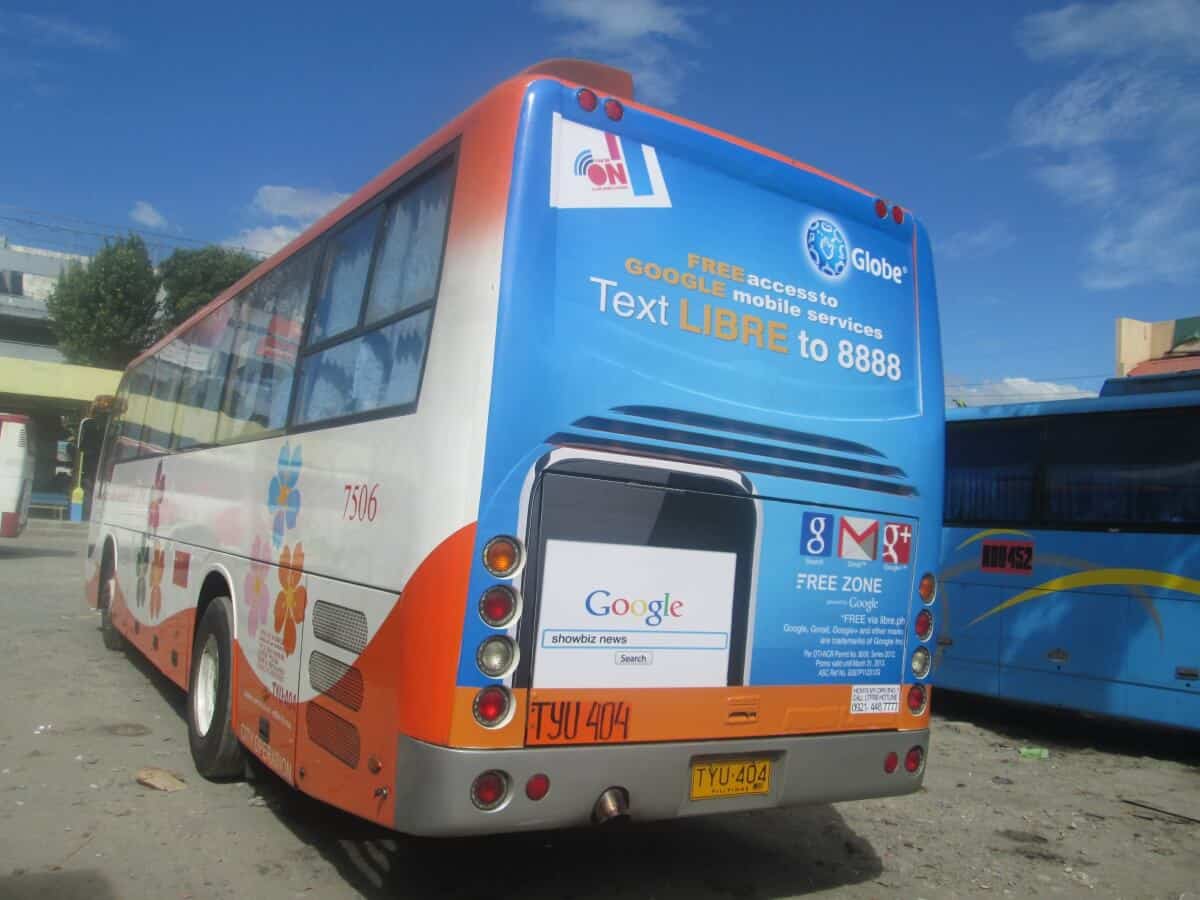Increase Brand Reach with Transit Advertising Philippines
Increase Brand Reach with Transit Advertising Philippines
Blog Article
Comprehending the Function of Transportation Advertising And Marketing in Enhancing Brand Presence and Consumer Interaction
Transit marketing has actually arised as a critical component in the marketing landscape, supplying distinct opportunities for brands to elevate their presence and involve consumers successfully. With the ability to reach a varied and captive target market during their everyday commutes, these advertising and marketing strategies are not simply concerning visibility; they have to do with producing purposeful connections with potential clients. As we check out the complex advantages and innovative methods within transportation advertising and marketing, it becomes important to take into consideration how these elements collectively influence customer perception and behavior, questioning about their lasting influence on brand loyalty.
Meaning of Transit Advertising
Transportation advertising and marketing describes the technique of promoting items, solutions, or brands through advertisements positioned in and around public transportation systems. This kind of advertising includes a variety of placements, including posters on buses and trains, electronic screens at transportation stations, and covers on the exterior of vehicles. It aims to reach a varied audience, taking advantage of the high foot traffic related to public transportation.
Transit advertising and marketing is purposefully positioned to catch the focus of travelers, who typically spend substantial time waiting or taking a trip. By incorporating ads right into the everyday routines of people, brands can develop an enduring perception and foster brand acknowledgment. The medium is specifically efficient in city atmospheres, where mass transit is a main mode of traveling.
In addition, transportation advertising can assist in localized targeting, allowing companies to get to specific demographics based on transit courses and terminal locations. As metropolitan populaces grow and making use of public transportation increases, this advertising method has actually gained importance as an important part of integrated advertising approaches. The vibrant nature of transit advertising and marketing, integrated with its capability to involve customers in a restricted environment, emphasizes its relevance in contemporary marketing techniques.
Advantages of Transportation Advertising
The efficiency of transit advertising exists in its capacity to provide a multitude of advantages to brands seeking to boost visibility and engagement. One of the primary advantages is the considerable reach it supplies; transit ads can successfully target diverse demographics throughout city areas, reaching both pedestrians and travelers alike. This broad direct exposure considerably improves brand name awareness.
Another benefit is the high frequency of impressions. As transportation automobiles take a trip along established paths and stop at numerous locations, they develop recurring direct exposure that enhances brand name messages. This regularity promotes experience, which is vital in customer decision-making.
Transit marketing is likewise cost-effective compared to other media platforms. Given its large reach and possibility for high perceptions, brands typically experience a lower price per thousand impressions (CPM), optimizing their advertising budget plan.
Furthermore, transportation advertisements can produce a sense of area link. By lining up with local transportation systems, brand names can reverberate with regional audiences and cultivate a feeling of local satisfaction. This local method boosts brand name commitment and engagement, making transportation advertising and marketing an engaging choice for organizations aiming to strengthen their visibility in the marketplace.

Efficient Techniques for Transportation Campaigns
To make the most of the influence of transit projects, brands should take advantage of tactical preparation and execution customized to their target audience. Initially, determining the group qualities of the target market using public transportation is critical. This enables brands to develop individualized messaging that reverberates with prospective customers.
Next, choosing the appropriate transportation tools is important. Whether utilizing bus covers, subway posters, or digital displays, each medium has unique advantages that can improve visibility. my response As an example, vivid visuals on bus wraps can attract focus, while digital ads can be updated regularly to mirror timely promos.
Moreover, integrating a natural branding strategy throughout transit platforms makes certain consistency and strengthens the brand's identification. Using remarkable taglines and appealing styles will enhance brand name recall amongst commuters.
By utilizing these methods, brands can effectively harness the potential of transit advertising and marketing, fostering better awareness and link with their target audience. Ultimately, a well-executed transit campaign can drive considerable growth in brand name presence and customer engagement.

Gauging Influence and Involvement
In evaluating the effectiveness of transit marketing campaign, accurate measurement of impact and involvement is vital for brands looking for to enhance their advertising techniques. Metrics such as reach, regularity, and impacts provide fundamental information to assess visibility. Analyzing these factors aids figure out exactly how many potential clients are exposed to the advertisements throughout their daily commutes.
Interaction can be further evaluated with consumer interactions, such as internet site web traffic, social media discusses, and direct responses to calls-to-action featured in the advertisements. Using devices like QR codes or unique URLs can promote tracking of consumer behavior directly linked to transportation projects. Studies and feedback mechanisms likewise act as valuable techniques to collect qualitative data on consumer understandings and recall of the ad.
In addition, progressed analytics and acknowledgment designs can associate transportation direct exposure with succeeding purchasing actions, supplying understandings right into the roi. By using an extensive method that combines qualitative and measurable procedures, brand names can create a nuanced understanding of their transportation marketing influence. Ultimately, this data-driven technique makes it possible for brands to improve their campaigns, ensuring they resonate efficiently with target audiences and boost general brand visibility.
Instance Studies of Successful Campaigns
Successful transportation advertising and marketing projects act as compelling instances of exactly how effective approaches can raise brand name visibility and interaction. Transit Advertising Philippines. One significant case is the "I Love New York" project, which transformed the city's photo and drew in numerous tourists. By using train ads, billboards, and bus covers, the project developed a strong, cohesive brand name identity, leading to a substantial uptick in tourist and neighborhood company patronage
One more exemplary project is Coca-Cola's "Share a Coke" campaign, which leveraged transit marketing to customize the brand experience. you can check here By including prominent names on advertising products throughout numerous transit systems, Coca-Cola fostered a deeper emotional connection with consumers, encouraging them to share their experiences on social media.
Additionally, the "Got Milk?" project properly made use of public transportation ads to reach a broad target market, reinforcing the message of the value of milk in a balanced diet. The project saw a quantifiable increase in milk intake in target demographics.
These instance research studies illustrate that when executed attentively, transportation advertising and marketing can substantially improve brand name exposure, foster customer involvement, and drive measurable results, demonstrating its crucial duty in modern advertising and marketing techniques. - Transit Advertising Philippines
Conclusion
To conclude, transit advertising and marketing works as an essential tool for improving brand name exposure and cultivating customer engagement. By using purposefully positioned ads within public transport systems, brand names can efficiently get to varied audiences and strengthen acknowledgment with consistent exposure. The application of targeted messaging and innovative techniques even more magnifies the effect of transit campaigns. Inevitably, the capability to determine involvement and examine successful study emphasizes the performance of transit marketing in driving brand name loyalty and consumer communications.
Transit advertising has actually emerged as a pivotal element in the advertising and marketing landscape, offering unique opportunities for brand names to elevate their exposure and involve consumers efficiently.Additionally, transit advertising and marketing can facilitate localized go to my site targeting, allowing services to reach particular demographics based on transit paths and station places.In assessing the effectiveness of transit advertising and marketing campaigns, exact measurement of influence and interaction is essential for brands seeking to optimize their marketing methods.Successful transportation marketing campaigns serve as compelling examples of exactly how reliable approaches can boost brand presence and involvement.In conclusion, transit advertising serves as a crucial tool for boosting brand visibility and fostering consumer involvement.
Report this page